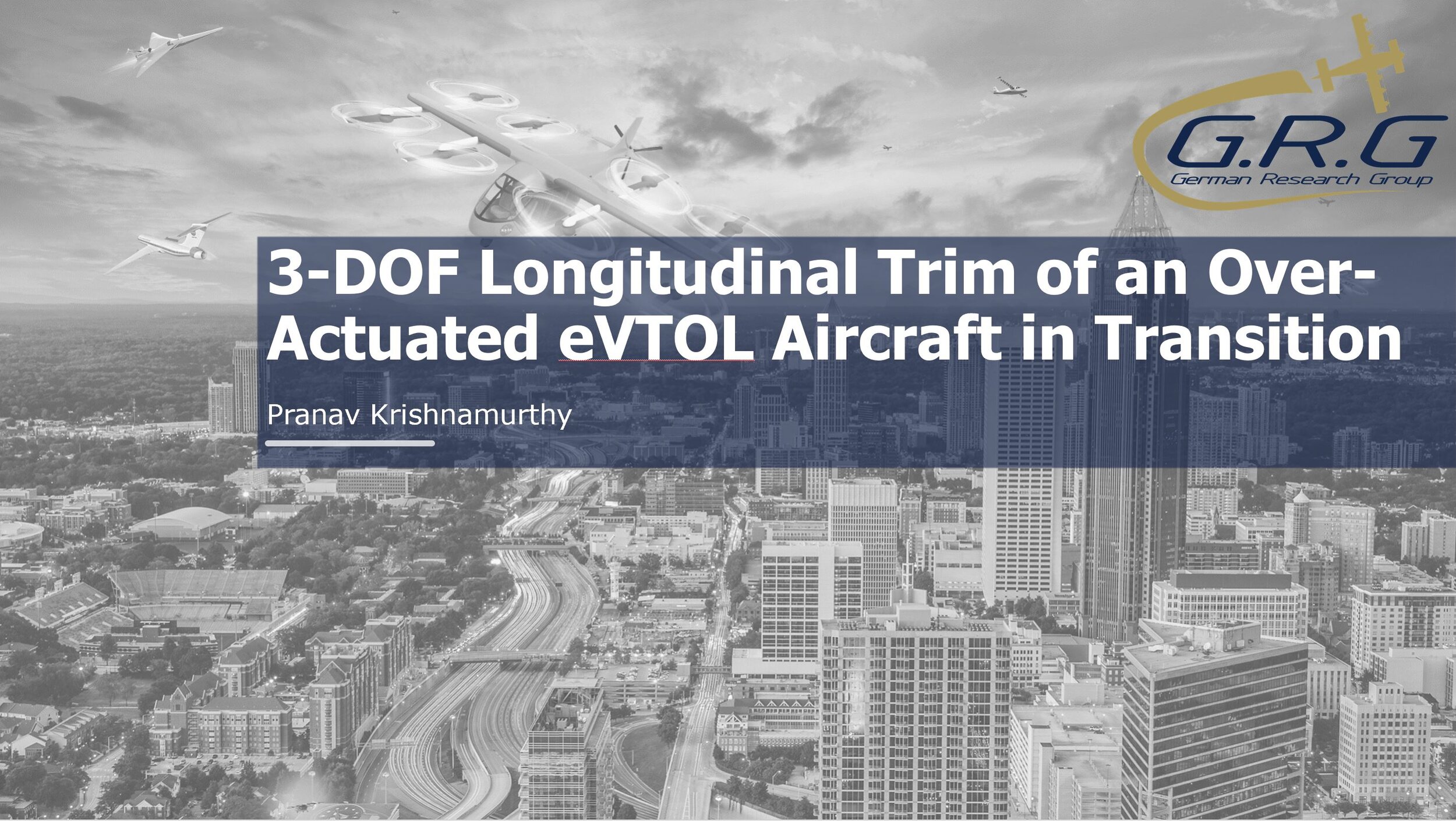Atlanta, Georgia
3-DOF Longitudinal Trim of an Over-Actuated eVTOL Aircraft in Transition
Scroll ↓
A small team of undergraduate and graduate researchers in Dr. Brian German’s lab created and tested a 3 Degree-of-Freedom model for an eVTOL tilt-rotor aircraft in transition. I was responsible for developing a surrogate model for the rotor loads and integrating the components with the optimizer in openMDAO.
Final Conference Paper
Trim of Over-Actuated VTOL Aircraft in Transition
Distributed electric propulsion (DEP) technology enables the development of vertical takeoff and landing (VTOL) aircraft with a large number of propulsors, aerodynamic surfaces, and control surfaces. In many cases, these novel VTOL aircraft have more actuators than degrees of freedom to control. This paper presents a method for analyzing an over-actuated VTOL aircraft through transition from rotor-borne to wing-borne flight. A three degree-of-freedom longitudinal dynamics model is constructed for a notional VTOL aircraft, and a gradient-based optimizer is used for control allocation to minimize propulsive power required for trim throughout the flight envelope. Results present the power-optimal quasi-steady transition paths for this aircraft at fixed and varying flight path angles. Results indicate that component performance requirements are more demanding in some phases of transition which may drive component sizing or configuration selection. In addition, results show a large number of local minima which motivates further development of the optimization problem formulation and exploration of alternate transition paths.
Abstract
As many companies begin to test prototype eVTOL aircraft, finding the optimal trimmed transition corridor between rotor-borne and wing-borne flight is critical for concepts with tilting rotors and wings. This presentation details the work done as part of a conceptual vehicle design of an eVTOL aircraft at the Georgia Institute of Technology. A three degree of freedom model with linear aerodynamic stability derivatives and a surrogate propulsion model was developed for the given aircraft. Interactional effects between rotors and lifting surfaces were neglected during the first development iteration of the tool. The optimizer SNOPT (Sparse Nonlinear OPTimizer) was used to drive the minimization of a specified objective function. Results provide essential insight into the optimal control and constraints of the transition for eVTOL aircraft.



